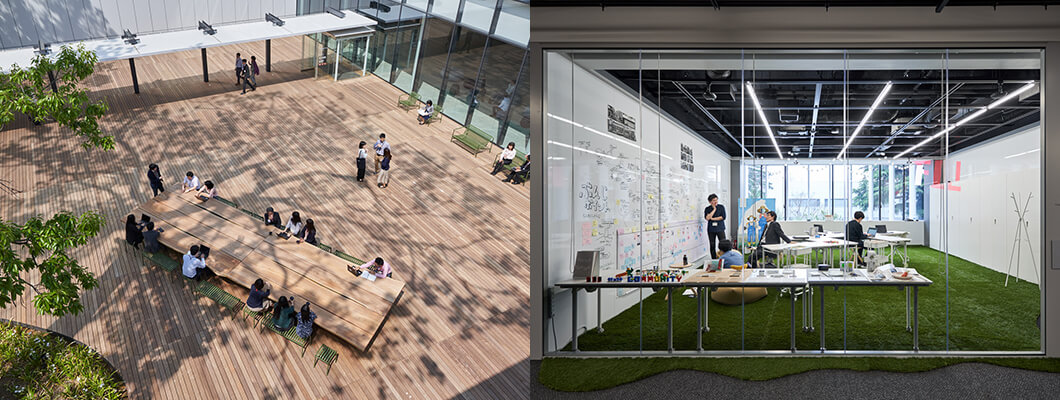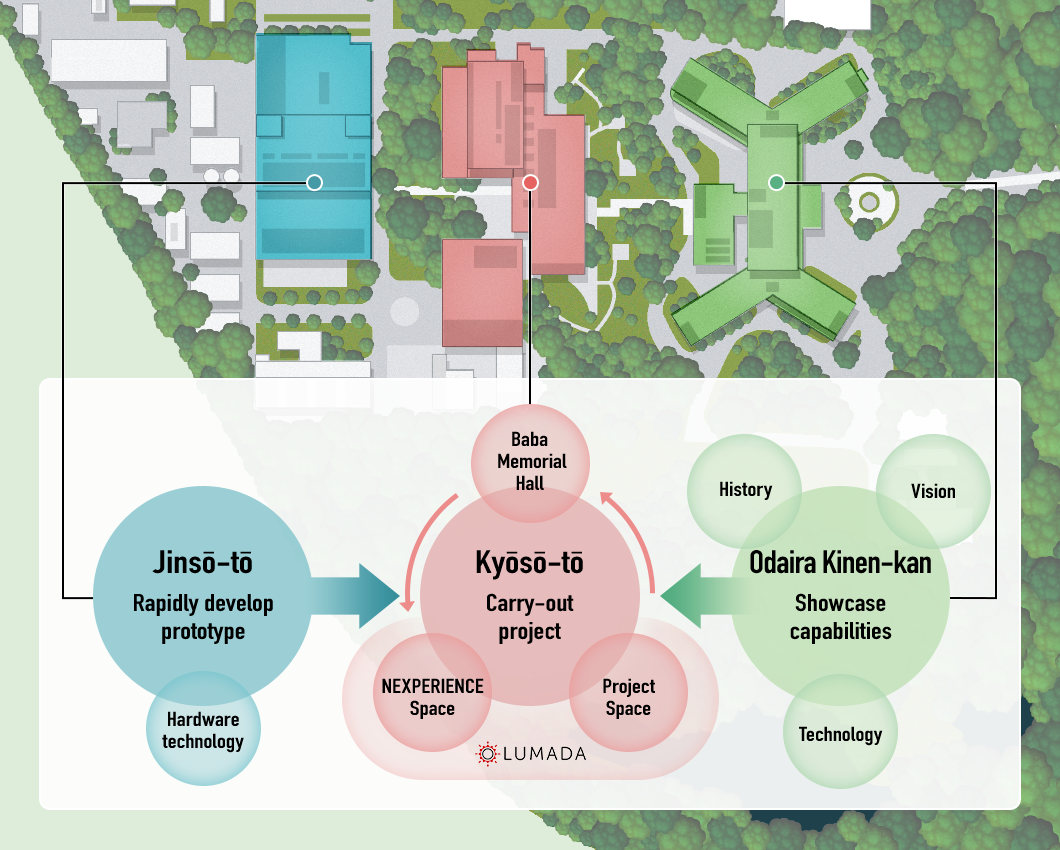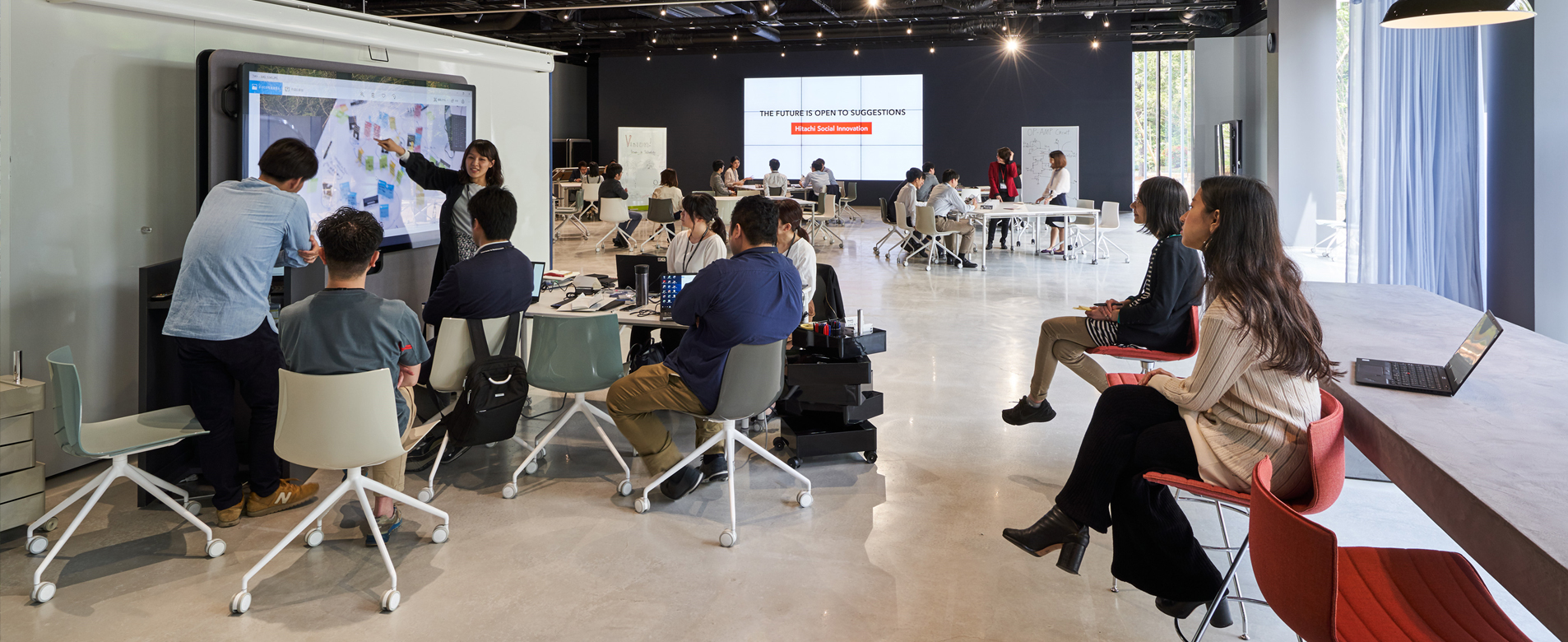

Hitachi launched Kyōsō-no-Mori in 2019 within the Central Research Laboratory (founded in 1942) in Kokubunji City, Tokyo, as a research and development hub dedicated to accelerating the creation of innovative. The facility embodies Hitachi’s vision of an open innovation ecosystem process, designed to contribute to the achievement of the SDGs and the realization of Society 5.0.
In the course of constructing the facility, every effort was made to preserve the 30,000 trees comprising the old-growth forest in the Musashino area, the spring waters that form the source of the Nogawa River, and the archaeological remains of Jomon era settlements—natural and historical treasures that the Central Research Laboratory has long valued. The building integrates cutting-edge architectural technologies, such as intaking outside air, dissipating heat through natural ventilation, and utilizing geothermal heating. As a result, it has been certified as Rank S under the Comprehensive Assessment System for Built Environment Efficiency (CASEBEE). The facility features comfortable outdoor terraces that provide space with tree shade in the summer and sunlight in the winter. This design also supports workstyle reform by providing inviting workspaces where employees can enjoy the rich natural environment.


At the heart of Kyōsō-no-Mori stands Kyōsō-tō, a four-story facility with a total floor area of roughly 16,000m². Project Space, on the second floor, serves as a venue to support collaborative creation between our clients and Hitachi researchers and designers. Project Space consists of Project Base, where visitors can experience Hitachi's cutting-edge digital technologies firsthand, and Project Rooms designed for focused development of specific ideas. It also offers a fully equipped studio, enabling users to communicate their activities at Kyōsō-no-Mori to others both inside and outside of the company.
In addition, NEXPERIENCE Space hosts ideathons and hackathons as co-creation workshops, and Hitachi Baba Memorial Hall, an international conference venue, can comfortably accommodate approximately 350 guests. These spaces provide the functions and environments necessary to foster open collaborative creation with people from around the world.
Alongside Kyōsō-tō, the Kyōsō-no-Mori complex also include two pre-existing research facilities. One is Odaira Kinen-kan, which offers visitors an opportunity to look back over the history of technological research and development, and is designed as a venue for accumulating wisdom and knowledge on cutting-edge research. The other facility, named Jinsō-tō, houses a cleanroom that has served at the forefront of manufacturing, and is designed as a venue for pursuing detailed prototyping. Both of which underwent renewal during the construction of Kyōsō-tō.
At Kyōsō-no-Mori, we aim to create a richer, more sustainable society with a high quality of life by fostering a more open and multifaceted, co-creative approach. Guided by three core strategies—a new form of collaborative creation, coexistence with nature, and work practices that promote creativity—we are working to bring multiple stakeholders together with Hitachi’s rich experience in IT & OT-related technologies.